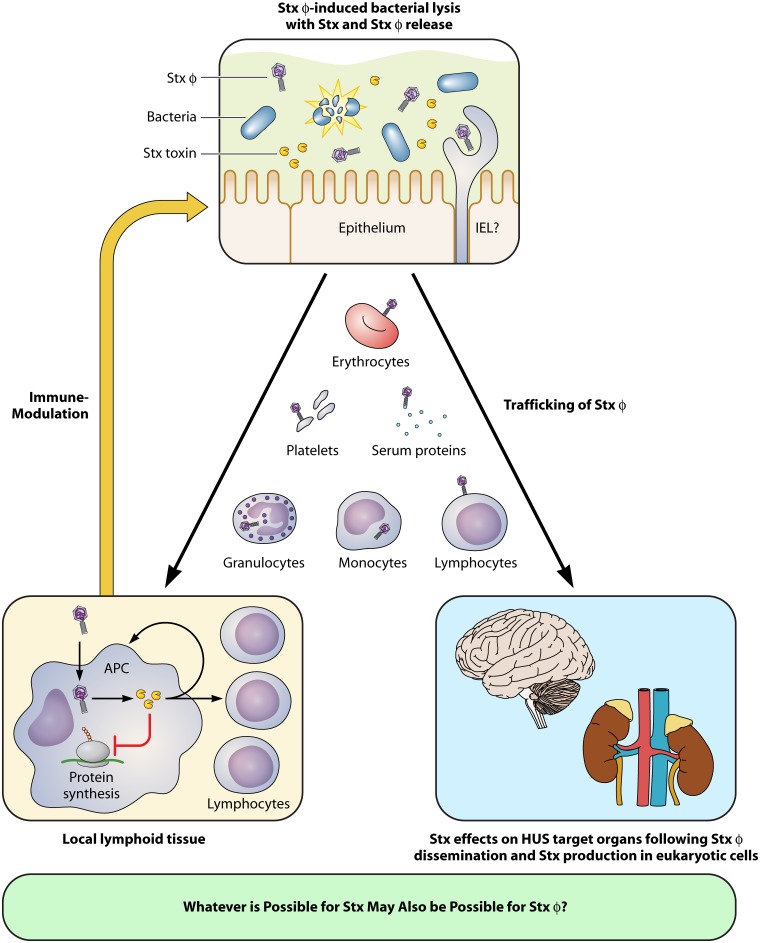FIG 1 .
Schematic illustration of a proposed mechanism for Stx-encoding bacteriophage (Stxϕ) uptake into eukaryotic cells with subsequent Shiga toxin (Stx) production following human infection with EHEC. The top panel demonstrates lysis of EHEC in the gastrointestinal tract, with release of both Stx and Stxϕ. Stx or Stxϕ would have to translocate across the epithelial barrier, and this may involve transfer in or on eukaryotic cells, including intraepithelial lymphocytes (IELs). Systemic trafficking is shown for Stxϕ in the central section of the figure, but this also applies to Stx. The bottom-left panel shows the production of Stx in eukaryotic cells in the local lymph nodes following uptake of Stxϕ into cells, in particular monocytes and macrophages. The Stx produced can have an impact on local immune responses that feed back to impact the survival of the host bacterial population in the gastrointestinal tract. The right panel shows Stx production from Stxϕ in the main organs affected during HUS.

